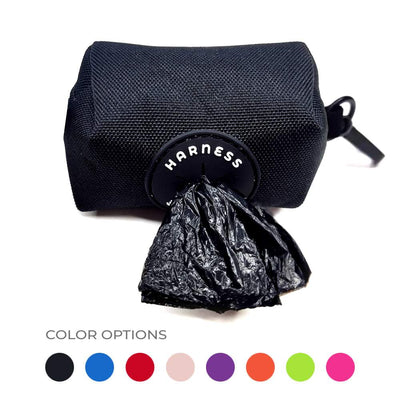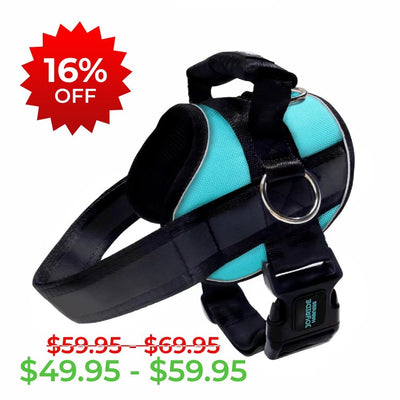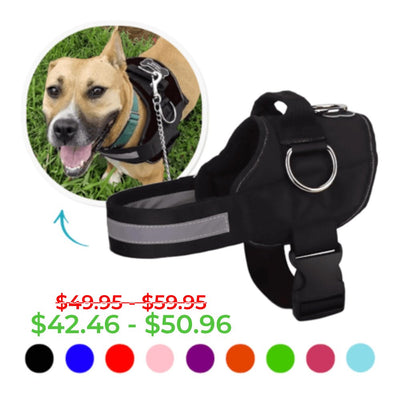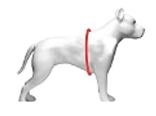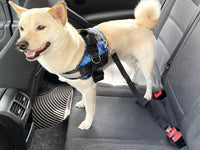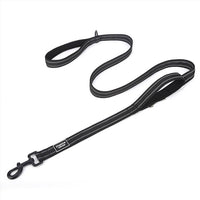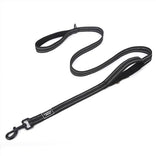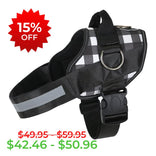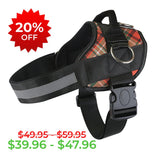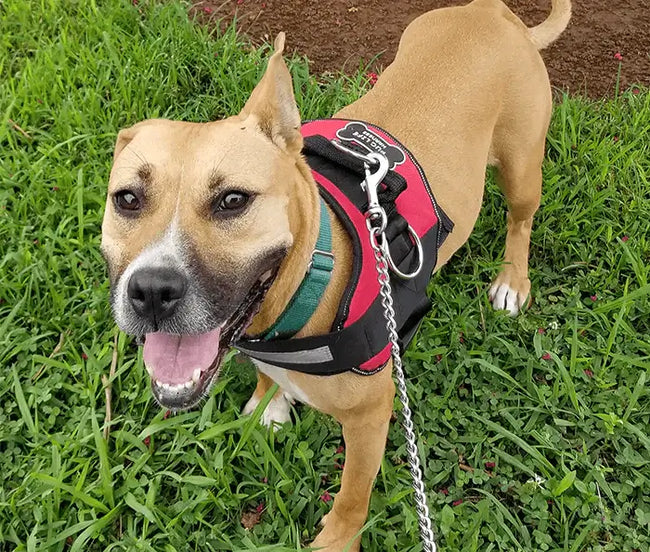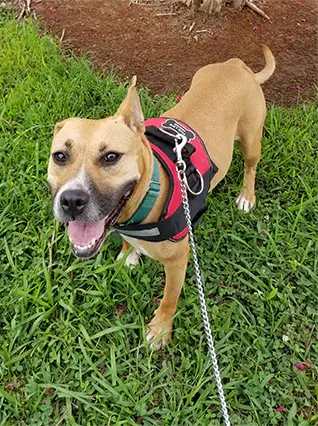Tracheal Collapse: How Dog Harnesses Prevent Further Injury

Are you welcoming a new fur baby to your loving home? Are you already a dog fur baby parent? No matter whether you’re a new dog parent or have been one your whole life, your pup’s health and safety are at the forefront of your mind.
From choosing the right food to providing the best veterinary care, you know how important these choices are. But did you know that how you choose to walk your dog can potentially cause them harm? There are things you should know about a tracheal collapse in dogs and how the walking accessories you pick can have positive or negative results on your dog’s health.
What is Tracheal Collapse in Dogs?
The trachea, also known as the windpipe, is “a cartilaginous tube that connects the pharynx and larynx to the lungs, allowing the passage of air, and so is present in almost all air-breathing animals with lungs.” [Source]. Tracheal collapse in dogs occurs when the windpipe’s cartilage rings collapse on themselves. This usually happens because of weak cartilage. Tracheal collapses in dogs are unfortunately a common occurrence and cause airflow obstructions.
Tracheal collapse is most common among smaller dogs because their tracheas are smaller and weaker. This means certain breeds are more prone to tracheal collapse, especially the toy breed variety. Tracheal collapse can also be associated with congenital abnormalities that cause the tracheal ring cartilage to be less cellular, therefore weaker than normal.
In dogs, tracheal collapse often happens during times of exercise or excitement. If your dog is panting heavily or breathing rapidly, it can exacerbate the collapse and make breathing even more difficult.
The most common sign of tracheal collapse in dogs is a persistent, dry, harsh cough. Also, look out for rapid breathing, difficulty breathing, low energy, and fainting. Obesity, kennel cough, heart enlargement, and exposure to smoke can make symptoms worse.

Preventing Collapsed Trachea Injury in Dogs
On the subject of dogs and tracheal collapses, there’s developing awareness of how pressure around the neck of dogs can lead to such damage. Collars, especially choke collars, are walking and training tools that can lead to tracheal collapse because of the repetitive pressure applied to the neck when your dog pulls.
“Repeated corrections done ‘correctly’ to the soft tissue of the dog's neck can cause tracheal damage. This damage can be mild, causing a mild cough or severe, including tracheal collapse and suffocation. A dog died in a Petco dog training class from a choke collar. The cause of death was ‘postobstructive pulmonary edema (POPE) as a result of a 'choke' or 'restraint.’" (Source: Kindred Companions).
Owners of breeds who are already susceptible to collapse should be extra cautious when it comes to dog collar tracheal damage. If your dog has suffered from tracheal collapse, or you are concerned about it potentially becoming an issue, the best thing to do is forgo collars for walking entirely.
Using a choke-free harness to walk your dog will prevent any possible dog collar tracheal damage. Harnesses like the Joyride no-pull harness secure around the chest rather than around the neck, which makes them an ideal option when considering the long-term health of dogs.
Joyride Harness Reviews for Dogs with Tracheal Damage

Carol - ⭐⭐⭐⭐⭐/5
Size/Color: N/A - Purple
“Getting a harness snapped on a pom is hard with all the hair, this is easy. More important however is that Pom's are prone to a collapsed trachea. This takes all pressure off the neck, but I still have full control without the pulling.

Darlene P. - ⭐⭐⭐⭐⭐/5
Size/Color: S - Green
“My dog has some problems with his trachea so having the strap lower on his chest is exactly what I wanted and so very easy to put on and take off. So glad I found your site.”
Switching to a Harness for Collapsed Trachea Injury in Dogs
You may wonder, if my dog already has tracheal damage, is it too late to switch to a harness?
The answer is it’s not too late! Not all dog parents get an early start with harnesses. Depending on the severity of tracheal damage, which can be fatal at times, dog parents who’ve experienced dog collar tracheal damage have successfully switched to harnesses to prevent further injury.
Whatever phase of dog parenting you are in, it’s not too late to consider switching from collars to harnesses. If you’re on the fence, we hope this breakdown of information helps you in your decision-making. If you have any further questions, be sure to check out our blog.
We hope to raise awareness of the negative impacts that can result in tracheal collapse and damage so that dog harnesses aren’t sought out as a last resort. You can learn how to choose the right size harness for your dog to ensure your fur baby stays safe when it comes time for walking.
Be sure to follow us on Instagram @Joyrideharness and Facebook to view more cute furbaby photos! We love sharing photos of our customers in their Joyride Harness gear!


